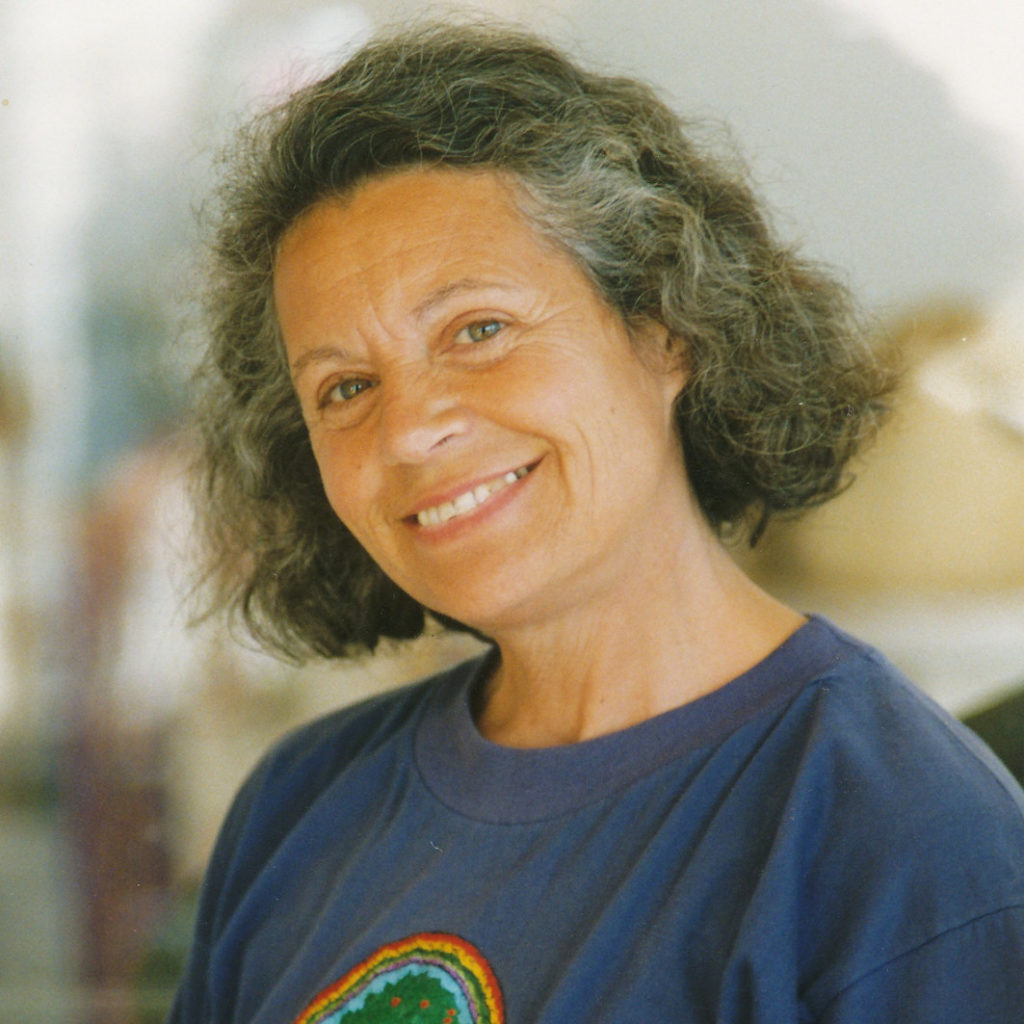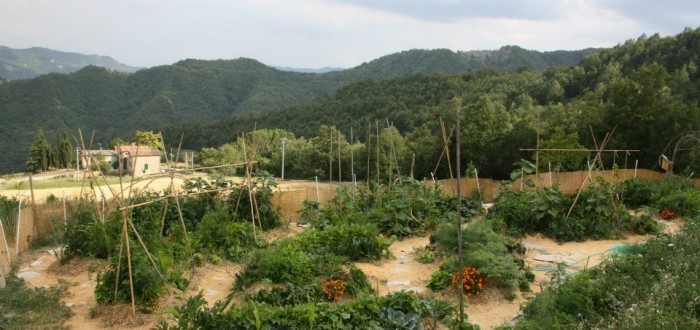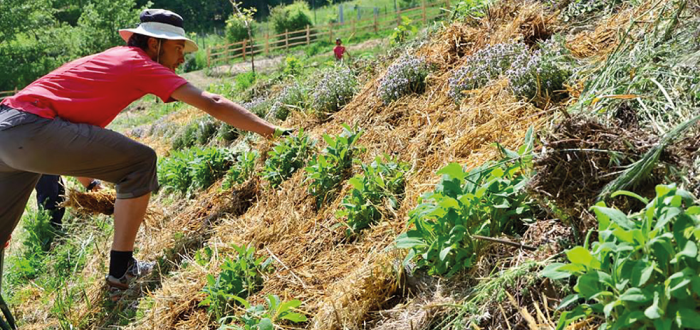Who was Emilia Hazelip
We have already talked about synergistic agriculture in a previous article, but today we would like to take a deeper look at the life and aspirations of its creator, the Spanish Emilia Hazelip (Barcelona, 1937 – Carcassonne, 2003).
She was born in 1937 in Barcelona, while World War II bombs were falling on her hometown. When she turned 18, she decided to leave Spain, embarking on a path that led her to challenge the Establishment of that period. During the ’60s Emilia experienced community life at the beginning of the hippie movement, soon realizing how the practices of ploughing and cultivating on an uncovered land were absolutely against nature. At the same time, Emilia wanted to find different ways to live in contact with the land, respecting the laws of nature and reintegrating the human being in the cycle of life.
She learned many things working at ecological farms in California and the Southwest of the United States, she came to know authors who were teaching how to cultivate without working the land (for example Ruth Stout) and the system of cultivation on raised beds (Alan Chadwick). Her intuitions found a response when, at the age of 40 years old, she discovered Fukuoka’s work, that she started to apply integrating it with elements of Permaculture.
She was a tireless creator and an attentive observer of nature, who devoted all her efforts to trying to heal the damage that the traditional agricultural system has caused to the earth. She did it by creating methods, foundations, practices and theories and by teaching them wherever she was invited to. She passed away without warning, even though she had so much energy that it seemed to be inextinguishable. Only a year before passing away, she had been involved in various projects and with so many things to do that sometimes she would to say: “thank goodness that I have planned to live 120 years”.
As an activist in the ecologist movements, she happened to breathe tear gas thrown at demonstrations that caused her asthma problems. Sudden respiratory complications forced her to the hospital where, a few days later, she passed away in her sleep.
Emilia Hazelip was born the same year in which Fukuoka began to outline its Natural Agriculture, a system that allows cultivation without working the land and that is considered to be the first major agricultural reform since agriculture exists. After 17 years of personal and professional research, in 1978 Emilia discovers the work of this Japanese microbiologist and farmer who confirmed her insights on the ability of the soil to self-fertilize whenever its natural dynamics is respected.
Emilia explains this concept in her video on synergistic agriculture published by herself in April 1995. She shows step by step the creation of an edible vegetable garden built on one hectare of land: “The work of Fukuoka was the proof that my intuition was right, meaning that working the land is not necessary. However, when I started to reproduce it, the results I obtained were so poor that I quickly understood the need to modify and adapt his system to other cultural and climatic conditions; this is how it was born what I decided to call Synergic Agriculture”
Everything is united and interconnected
Emilia found in her model the agriculture of the next millennium and she had the chance to experiment it with excellent results in countries with high population density and lack of resources. “Personally, I consider the deconstruction of the soil, keeping it artificially fertile, fattening it with fertilizers, compost, etc, an error that has been repeated since the beginning of agriculture and now is the time to remedy this mistake responsible for a lot of erosion of the planet”, she repeated continuously.
In the numerous courses she gave all over Europe, especially in France, Italy, Switzerland and Spain, she was committed to bring her students to understand, starting from a broad and global vision, the interaction and unity of all things: “The originality of Permaculture is that while creating a practical project, we learn to think globally, to see the connections. And when we overcome the initial vertigo of using our mind in multiple and simultaneous directions, we feel a profound peace, allowing the brain to function its complementary hemispheres, in creative harmony, manifesting itself here and now, without parasitism…”
In order to feel good about ourselves we must feel that the planet is fine, everything is in everything and we are not an exception. Even if culturally we have lost our state of grace, as human beings we can reintegrate it and this is when ecology begins”. During her courses the work has always been intensive, in 10 days the gardens, the compost-toilet the chicken coops, the greenhouses and everything that was missing in the project was built. The size of the land did not scare her, and it was easy for her to get around the specific problems of the place and to draw instead a source of resources for the project itself.
In the last years of her life, Emilia used to ask for continuity in the projects she was involved: at least 3 years of application of the principles of synergic agriculture to give time to the land to self-regulate. There were many gardens started, but only a few that, after an initial enthusiasm, continued to respect the basic principles. “The conventional models and myths about the needs of a garden are so deeply rooted in us that we need to undertake a total change in the relationship with the earth”.
Emilia decided to be part of the solution
In her profound reflections, Emilia was sorry for the depredatory reality that man has created in his effort for exploitation, “An economy based on continuous growth cannot keep on going on indefinitely, it is not lasting. However, admitting it means accepting that our system is false… and obviously, it is easier to get rid of minorities, to start wars, to repress and suppress entire populations… than to admit our error “.
Her vision of the future led her to an apparent blind alley, “Western culture thinks in terms of natural resources when considering the planet’s wealth. Water and air, elements that were believed to be inexhaustible, are beginning to be fragile resources, to which scarcity is really difficult to remedy. For this reason, when we deeply analyse the consequences of the exploitation of the planet, we feel powerless… it’s like a duel with life, with ourselves and with the life forms that are dearer to us. What can we do? How can we be an integral part of the life on this planet again? How can we get out from an immoral and parasitical economy? How can we prevent this planetary genocide, this collective suicide?”
However, Emilia found the key in herself, she decided to be part of the solution, to make her life an example of return to the laws of nature, to work for life by creating real alternatives to a model of coexistence with oneself, with others and with the planet that is unsustainable, parasitic like she would say. Her enthusiasm and confidence were contagious. Mother of two daughters and happy grandmother of three grandchildren (the last born after her death), Emilia often said that they were her priority in life.
Newsletter
ARGOMENTS
- Activities (8)
- Farm products (4)
- Fattoria dell'autosufficienza (39)
- News (63)
- Our models (14)
- Permaculture (23)
- Senza categoria (2)
- Things to do (22)
- Tourist attractions (15)



